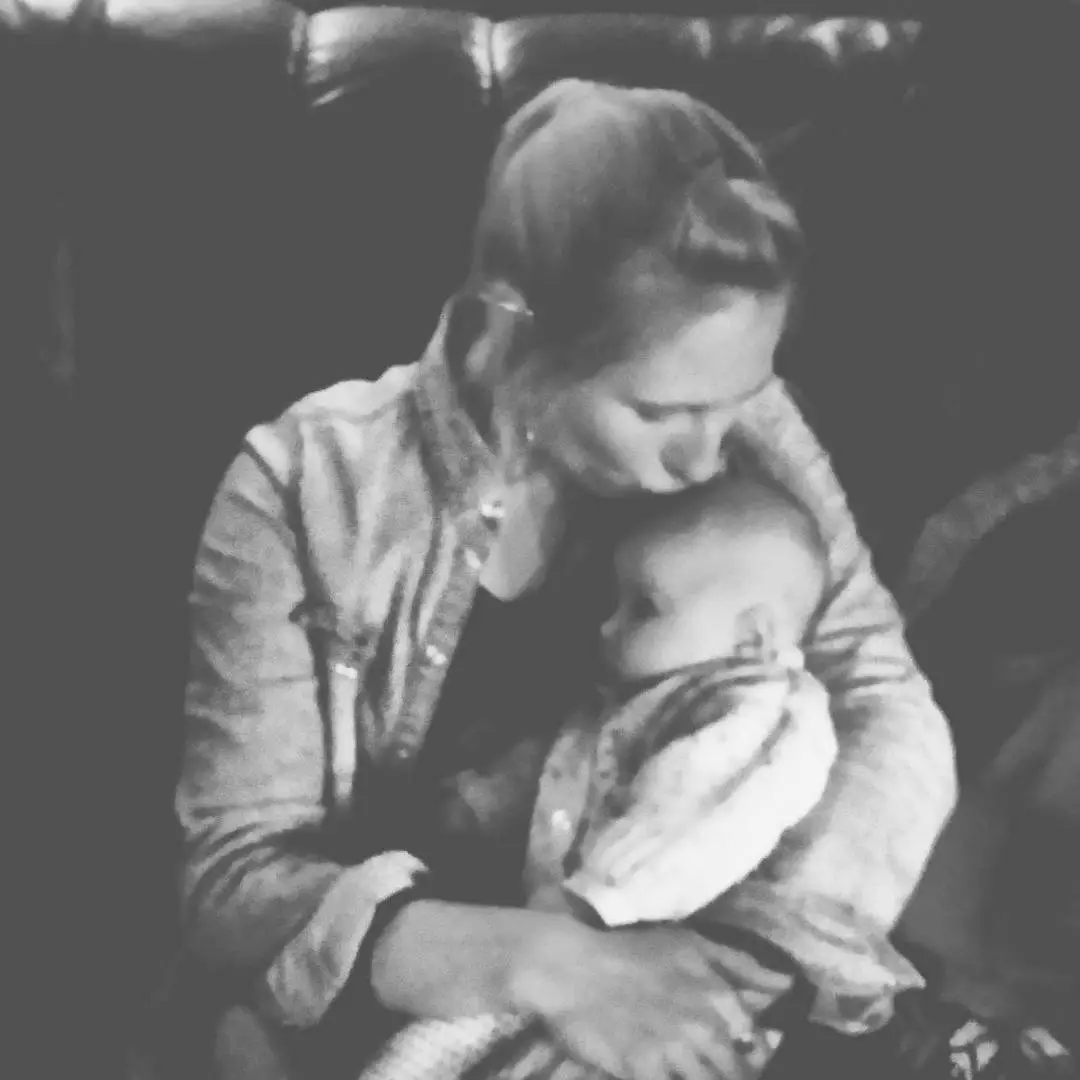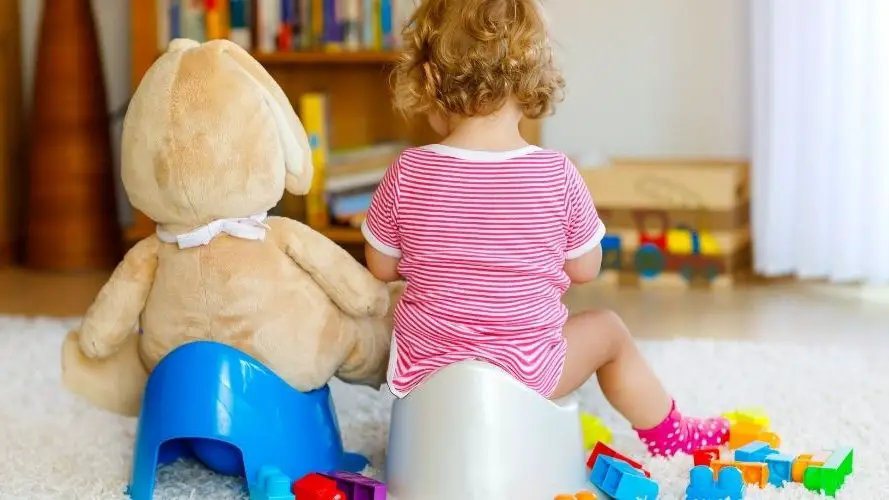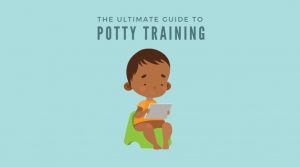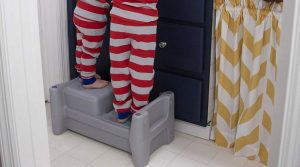The journey from diapers to dry underwear is one that varies significantly by child, a fact to which parents of siblings can certainly attest. Though some kids are ready to begin toilet training earlier than others, the process can be made easier on children (and parents) of any age with an effective potty training schedule.
When we refer to a potty training schedule, what we’re really talking about are a variety of time-based methods designed to encourage the transition to exclusive toilet use — there’s no hour-by-hour checklist, and different training methods and projected timeframes can be used depending on your family’s lifestyle.
Ready to pack away those Pampers for good? Let’s dive in.
Is my baby ready to potty train?
Every child develops on a different schedule; though there are goalposts for certain milestones, like walking, talking, and toilet training, your child may surprise you by showing signs of readiness early, or conversely, by taking a great deal more time than a sibling to successfully learn.
We’ve covered the signs of potty training readiness in depth in our Ultimate Guide to Potty Training, but for a quick primer, these are some clear signs your child is ready to start transitioning out of diapers1American Academy of Pediatrics. (1999). Toilet training guidelines: day care providers—the role of the day care provider in toilet training. Pediatrics, 103(Supplement 3), 1367-1368.
pediatrics.aappublications.org
- They are able to keep their diaper dry for more than two hours at a time
- They’re able to indicate to you when they need to void, or are doing so
- They’re more intolerant of dirty diapers, demanding a quick change once soiled
- They’re interested in and inquiring about adults’ and older kids’ use of the toilet
Related: What Do I Do When My Toddler Withholds Bowel Movements?
How do potty training schedules work?
In essence, a potty training schedule is designed to create a blueprint for you and your partner to consistently follow in helping your child establish bathroom habits.
This can and should be structured around your lifestyle and needs. It’s important to wait until your child is physically ready, but equally important to not try to jam a potty training schedule into an especially hectic period of time in your lives, say a busy month at work or a month full of family events — this cuts down on tension and frustration for all parties in a situation where positivity is essential.
These three methods are among the most popular potty training schedules, though they are not your only options. Pediatricians have not recommended one style of scheduling over another, and the general sentiment toward potty training amongst experts is that the best method for your child is the one that works for you both.2Lang, M. E. (2008). Among healthy children, what toilet-training strategy is most effective and prevents fewer adverse events (stool withholding and dysfunctional voiding)? Part B: Clinical commentary. Paediatrics & child health, 13(3), 203-204.
ncbi.nlm.nih.gov
So, what does this mean in practice?
It means that you have the option to choose a more regimented training method that devotes the majority of a short period of time to potty training your child, but that it’s perfectly fine to flexibly toilet train over a longer period of time using either a formal time schedule or more casually around a child’s day-to-day activity.
Casual scheduling
If you’d like to keep a casual, calm attitude around potty training that doesn’t pressure you or your child to hurry up and reach the milestone, you might prefer casual scheduling.
This refers to simply incorporating visits to the bathroom as a part of your child’s daily process, just as they are a part of yours. Because they’re learning, the visits will need to be more frequent, but they aren’t timed.
To kick off this scheduling method, you can begin taking your child to the toilet after they wake up, both before and after they have a meal or play outside, and in between transitioning to a new activity. Pull-ups can be used to prevent messy accidents, but mimic the utility and function of underwear.
You’ve also likely observed that your child may make a bowel movement or urinate around a certain general time each day, which is an ideal time to make a visit to the restroom.
Three-day potty training
Quite a bit more intense, three-day potty training is an all-encompassing process; you’ll be watching your toddler like a hawk, which means that work, chores, and other commitments must be pushed aside during the 72-hour period.
During the three days devoted to potty training, you’ll be with your child at virtually all times, observing them for cues that they need to void their bowels or bladder. It’s helpful to camp out near a bathroom — playtime in the master bedroom, for example — as you’ll need to scoop them up and take them right to the potty if you see that they’re going.
This process can be a bit messy, as the crux of the method is exclusive underwear use. You may want to throw a few towels down on the floor where your child is playing, and keep lots of clean pairs on hand for a quick change.
Timed scheduling
A third option which falls between these two is timed scheduling. A bit more regimented than following your child’s routine, a timed schedule advises that they make a trip to the bathroom every one to two hours, sitting on the potty for a few minutes to see if they need to go.
You might choose to literally use a timer for this, if you feel you might lose track of the time. Otherwise, going every 60-120 minutes on average is perfectly reasonable.
Like casual scheduling, pull-ups are beneficial here for reducing mess from accidents but still demonstrating how underwear are put on and taken off.
Tips for potty training success
- Reward, but don’t punish. While creating a rewards system that uses a chart, prizes, or the promise of fun activities to praise potty training success can be very effective, negative reinforcement, punishment, or showing anger or frustration when your child has an accident are, in equal measure, counterproductive.
A key to success is keeping their potty training experience positive — even though some frustration is natural, save it for a conversation with another adult behind closed doors, because your little one needs to know that accidents are a normal part of this process.3Helping your child with potty training
ncbi.nlm.nih.gov/books - Be open about your bathroom use. Curiosity about use of the toilet and others’ bathroom habits is, among others, a sign that your child is ready to kick off the potty training process.
- Be flexible in your methodology. Just because you’ve chosen one potty training schedule or method doesn’t mean you can’t borrow from others, change course, or hold off until your child demonstrates greater readiness. Like many aspects of parenting (and life), becoming so attached to a plan that you become inflexible can get in the way of your long-term success.
- Prep with the right gear. There are some obvious essentials to keep on hand when potty training, like a training potty and big-kid underpants, but you’ll likely benefit from also investing in some pull-ups, extra sheets and undies, a waterproof mattress pad, and extra cleaning supplies. If you’re planning a rewards system, a chart and prizes should also make this list.
Our takeaways
While achieving full toilet training is a milestone nearly all parents are eager to achieve, the truth of the matter is that it will take place on your child’s developmental timetable. Being aware of signs of potty training readiness can help you prepare for beginning the transition.
Potty training schedules can be an effective means of introducing your child to regular bathroom use, but flexibility is key. There is no formal medical advice on the methodology of toilet training, so what works for you and your child will inevitably be best; this may wind up borrowing from several existing methods, but remaining calm and positive and refraining from punishment are key to long-term success.








